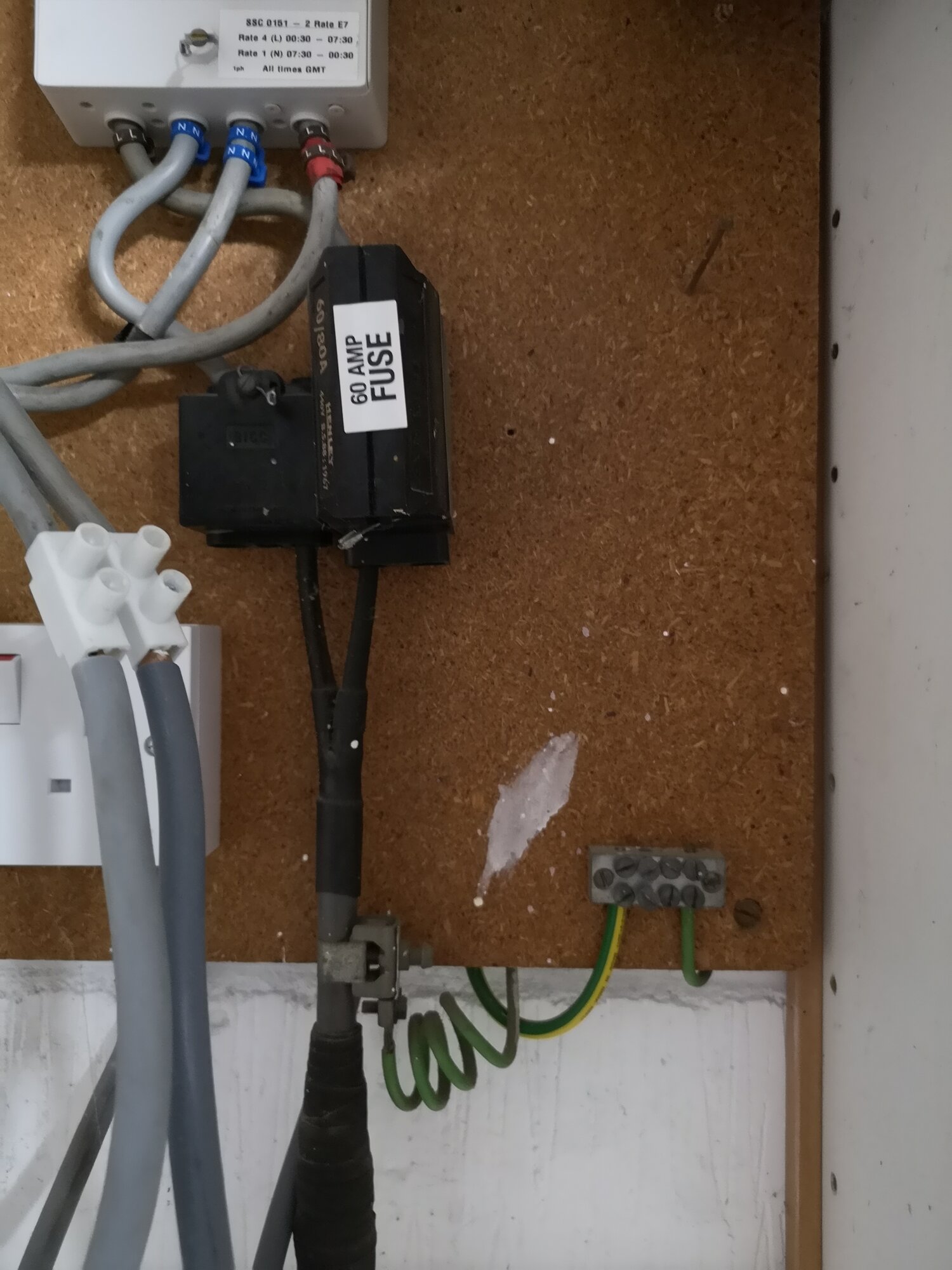OK - all comments above apply! I suggest you get those tails sorted out and an isolator fitted ASAP.
1) The earthing system appears to be TN-S. In the absence of a measured value, we will use 0.8Ω for the value of the external earth loop impedance, represented by Ze. This value is important as it forms part of the loop impedance through which a fault current will pass ( represented by Zs) and we need to ensure that the total impedance of that loop is not so high that the fault protection device will not operate within the time required in the regulations, which is 0.4 sec. (reg 411.3.2.2 table 41.1). 0.8Ω is the maximum value of Ze declared by the supplier for TN-S supplies.
2) 14m - we will use this value later to calculate Zs and voltage drop (Vd). At this point, I simply note that this is very short and very unlikely to have any impact on the cable size selection, for reasons that will shortly become apparent.
3) Here we come to the crux of the matter, relating directly to the first three posts in this thread. All cables have resistance, and when a current flows through a cable, energy is released as heat, which increases the temperature of the cable. This heat is dissipated into the surroundings and the temperature of the cable increases until the rate of energy loss to the surroundings is equal to the rate of energy released as heat generated by the current passing through the cable. The thicker the cable, the lower the resistance and thus the lower power lost as heat (P=I²R).
The cables normally used for domestic installations are rated to 70C. If the cable temperature rises above that the cable may be damaged and may eventually cause a fire or other hazard.
Now, the rate that a cable can lose heat to its surroundings depends on the thermal conductivity of those surroundings. The regulations describe 120 different methods of installing a cable (table 4A2) and other tables allow us to determine the current carrying capacity (CCC) of different types and sizes of cable for each of those Installation Methods. We have to select the cable size based on the worst case for the installation methods that will be used.
In this case, the OP states that the cable will be installed as follows:
1) "in some conduit"
2) "into ceiling void where there is some rockwool type insulation so will be attached to joist". The OP is unsure are this point if the insulation thickness will be <=100mm or > 100mm, so I will look at both options.
3) "into a chased concrete block wall"
These equate to installation ref. method B, method 100 or 101 and ref. method C respectively. We now need to check in table 4D2A (for B) and 4D5 (for 100, 101 and C) to find the size of cable required for a 32A circuit.
For 6mm², the CCCs are as follows:
Ref method B: 38A
Method 100: 34A
Method 101: 27A
Ref method C: 47A
So, 6mm² will suffice, subject to checks for Zs and Vd, so long as the insulation thickness in the ceiling is <=100mm (method 100). If the insulation is >100mm (method 101) then 6mm² cannot be used.
Let us now select the cable for method 101. Again, from table 4D5 we can see that the next size up, 10mm², has a method 101 CCC of 36A, which will suffice. Since this is the worst case, we don't need to look at the other methods.
All that remains now is to check for Vd and Zs. In this case, since, with a 15m run and cables >=6mm², I know that this will not be an issue and as my fingers are getting tired I leave this as an exercise for the reader.
NOTE: to others - rather than clutter up this string with endless discussions of no help to the OP, as so often happens, if you spot any errors in the above, please send me a private message and I will correct them and give you a credit.





